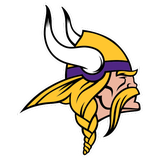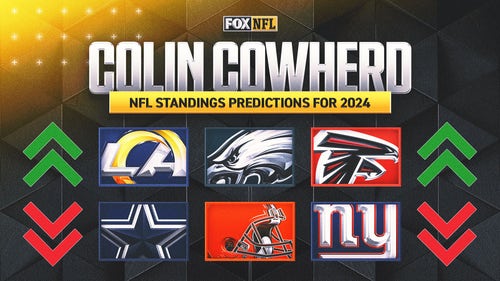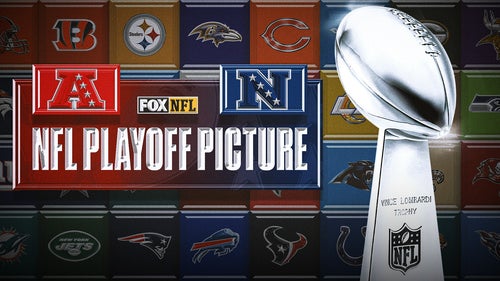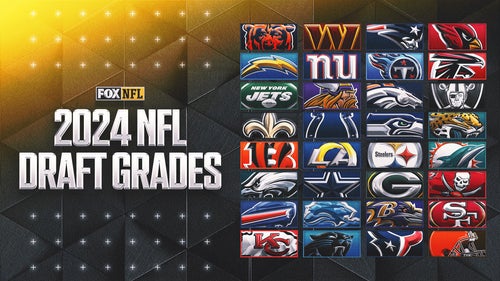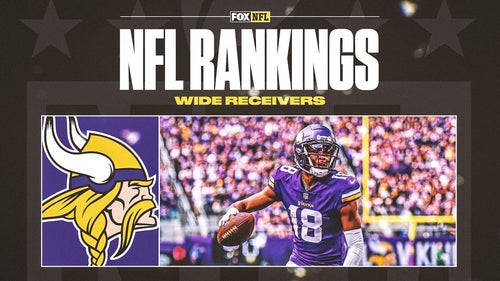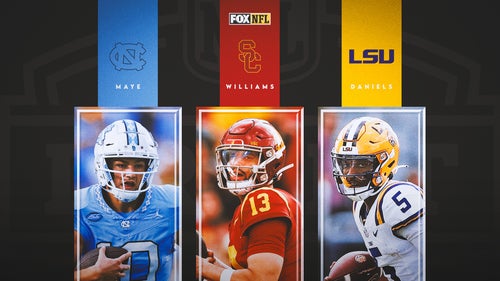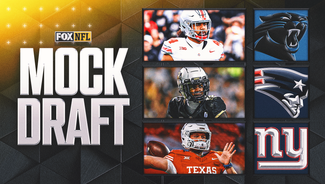
2017 NFL Draft: 5 Second-Round Options for the Minnesota Vikings
The Minnesota Vikings draft doesn't have a first round pick. Who, then, should the team target in the second round?
The Minnesota Vikings 2016 season was a veritable roller coaster of emotions. From a truly disastrous beginning before the season even started, to a surprisingly strong start to the season, to a complete collapse by the end of it. What needs to be done in the Vikings draft to provide some stability, and success?
Before the season even began, the Minnesota Vikings received the news that no NFL franchise ever wants to hear. During training camp activities their star quarterback, and current face of the franchise, Teddy Bridgewater suffered a horrific leg injury and was lost for the season. Left scrambling, the Vikings were forced to trade for former Philadelphia Eagles QB Sam Bradford, with mixed results.
The season started off strong for Bradford and the Vikings. They won their first five games,, some in dominating fashion. After that, the wheels began to fall off. The team would lose four straight, and eight of the last 11 to finish the season with an 8-8 record, missing out on capturing back-to-back division crowns.
Injuries had a lot to do with the Viking's late-season collapse, as they were a team decimated by the injury bug by season's end. However, that doesn't discount the fact that this is a team with a lot of holes. Particularly on the offensive line.
The Vikings finished 23rd in the league in points scored, and dead last in rushing yards. Missing Adrian Peterson accounts for a lot of that, but the holes up front can't be ignored. How should the Minnesota Vikings draft address these issues? Who should the team target with their first pick in the second round? Let's take a look at five options.
Mandatory Credit: Jeremy Brevard-USA TODAY Sports
5. Roderick Johnson, OT – Florida State
The Vikings offensive line was already not a great unit coming into the year. Injuries didn't help their case either. The fact that Sam Bradford had as good a year as he did is a testament to how underrated Bradford has been over his career. When he's healthy, Bradford is a very good quarterback, and he showed it at times in 2016.
More from NFL Spin Zone
Coming into the 2017 season, the Vikings have even more questions up front than they did heading into the 2016 season. They have holes that need to be addressed at both the right tackle and right guard position. If they don't bring back starting left tackle Matt Kalil, that leaves yet another hole along the line. What answers are available in the 2017 NFL Draft to deal with this deficiency?
The best option likely to be available when the Vikings pick—as they are without a first-round selection this season—is Florida State lineman Roderick Johnson. At 6-7 and just over 300 pounds, Johnson has the potential to be the "road grader" type lineman that would fit perfectly with what the Vikings like to do up front. Johnson is very athletic for someone his size. He has the potential to be a plug-and-play guy at both the tackle and guard positions.
Johnson could have benefited from not declaring early and spending one more year at Florida State. He has some technique issues that could have been worked on at school, and he doesn't have the strength to play on the left side of the line at the professional level.
However, if Johnson can get those technique issues worked on and adds the muscle he needs, he could be a very good lineman for a lot of years. The Minnesota Vikings draft desperately needs to address the offensive line, and Johnson may very well be the best option available to do so.
Mandatory Credit: Brendan Maloney-USA TODAY Sports
4. D'Onta Foreman, RB – Texas
Another major reason for the Vikings' mid-season collapse was an inability to run the football. They finished dead last in the league in rushing yards, averaging only 75 yards per game. A lot of that onus falls on the offensive line and their inability to open holes for the running backs. A lot of it, but not all of it.
The Vikings were hamstrung from the beginning of the season forward by the loss of their star running back Adrian Peterson. Peterson has been one of the best backs in the league since entering in 2007, and his loss was a major issue for the Vikings. Jerick McKinnon is a good back, but he's not an every-down back that you can rely on to pound the rock with. That aspect was sorely missing from the offense.
With Peterson aging and a major salary cap hindrance, the Vikings seem poised to move on and begin life without him. The long-term answer at running back isn't currently on their roster, but the draft may have the answer.
The best option likely to be available when the Vikings use their second round pick is D'Onta Foreman, the running back from Texas. Foreman fits the kind of stout, physical running back you think of when you think of traditional NFC North football. At 6-1 and nearly 250 pounds, Foreman has the frame to stand up to the beating he'll take at the next level.
Foreman is a terrific athlete for his size, and has a great burst in the open field. He is capable of flashing some pretty brilliant agility for a man his size. However, that agility is sometimes a double-edged sword for Foreman. Too often he chooses to finesse defenders instead of remembering that he's a big, physical back. He's also going to need to work on his pass protection skills significantly if he want to prove that he can be the three-down back NFL teams will need him to be. Foreman has work to do, but in a deep running back class, He has the capability to be one of the best in the class.
Mandatory Credit: Kim Klement-USA TODAY Sports
3. Caleb Brantley, DT – Florida
From Carl Eller, to John Randle, to Pat Williams, the Minnesota Vikings have always been a franchise known for strong defensive line play. That was certainly no different in 2016. The Vikings defense was good enough to finish third in the league in both passing and total defense. Thanks in large part to a strong showing from the front line. A front line led by Sharrif Floyd.
Floyd is a scheduled to become a free agent this season unless the Vikings decide to pony up the money it's going to take to keep him in purple in gold. All signs point to the Vikings being ready to move on from Floyd. If the team does decide to move on from the star defensive tackle, who do they pair with Linval Joseph? Again the answer could lie in the 2017 NFL Draft, in the form of Caleb Brantley.
Brantley has all the physical talent in the world. He plays stronger than his frame suggests. He has a great motor, which is something that can't be said for some of his DT counterparts. Brantley also has a great first step and is a better pass rusher than people give him credit for.
His first step can get him in trouble, and will need work at the next level. Brantley drew 10 offsides penalties over the past two seasons, which is even more troublesome when you consider how much time Brantley wasn't on the field. Brantley was in a rotation of linemen at Florida and wasn't on the field for more than half of the defensive snaps during his career.
If Minnesota were to take Brantley in the second round of the 2017 draft, they'll be getting a "boom-or-bust" type of player. At his best, Brantley has the potential to be an All-Pro for the next ten years. At his worst, he has the potential to find himself out of the league. With the right coaches and locker room environment, he's worth the risk.
Mandatory Credit: Steve Mitchell-USA TODAY Sports
2. Cordrea Tankersley, CB – Clemson
The NFL game has changed in the last couple of decades. It's no longer your father's game where defenses are in their base package a majority of the time. Teams aren't likely to run the ball 20-30 times a game to break your will. It's become a pass-happy league where 3,000 yards is no longer a good season, it's a baseline target.
With that change has come changes in how defenses look at personnel. Teams are in their sub packages a majority of the game, and an added emphasis has been placed on having an abundance of good defensive backs. Those defensive backs have also changed over the years. The Seattle Seahawks have pioneered a new mold for bigger, longer corners that teams have been quick to follow, including the Minnesota Vikings.
The Vikings need help at the cornerback position. They drafted Mackensie Alexander in the second round of last year's draft. In 2013, they drafted Xavier Rhodes, who has blossomed into one of the better young corners in the league. But in today's NFL, and especially in a division with the likes of Aaron Rodgers and Matthew Stafford, having three solid cornerbacks is not a luxury, but a necessity.
Enter Clemson's Cordrea Tankersley. At 6-1, 200 pounds, Tankersley fits the new mold of corner that teams are coveting. Tankersley is a big, physical corner who loves to impose his will on the man lined up across from him. He's a confident corner who is great in both press coverage and off the ball in zone.
His recovery speed and ball skills give him the potential to succeed in a variety of coverages, but he needs to trust his instincts more. He'll need a coaching staff that can teach him to trust what he's seeing and react to it immediately. Tankersley has a tendency to think too much instead of reading and reacting.
Mandatory Credit: Michael C. Johnson-USA TODAY Sports
1. Patrick Mahomes, QB – Texas Tech
It's fair to say that most analysts and fans alike thought the Viking's season was doomed before it even began when Teddy Bridgewater suffered his injury. Unfortunately for both Bridgewater and Vikings fans, it appears as if they may be without the quarterback again for the 2017 season. Sam Bradford played well after being acquired from the Eagles. But it might be time for the Vikings organization to start thinking about the long-term future at the position.
Is Teddy Bridgewater ever going to recover from his injury? If he does, what will the new Bridgewater be like? He's not going to be the same quarterback he was. He's just not. If Bridgewater isn't able to come back, is Bradford the long-term answer? I don't think they're going to put their long-term faith in Bradford's hands. Bradford showed this year that, when healthy, he is a very serviceable quarterback. But you can't ignore his injury history.
Who then do the Vikings look to? Patrick Mahomes.
It sounds crazy, I know. But Mahomes is just the kind of gun-slinging, confident quarterback that I think can really succeed at the next level. He reminds me a lot of Jay Cutler. Which isn't exactly a ringing endorsement. But the kid has a ton of potential. And I think he has a better head on his shoulders than Cutler.
Mahomes has his flaws—a lot of them. His footwork is a disaster, and his mechanics aren't far behind. But everything works for him. He gets the job done, and he gets it done well. The NFC North is well-known for its gunslingers, and Mahomes could be the next great one for the Minnesota Vikings.
